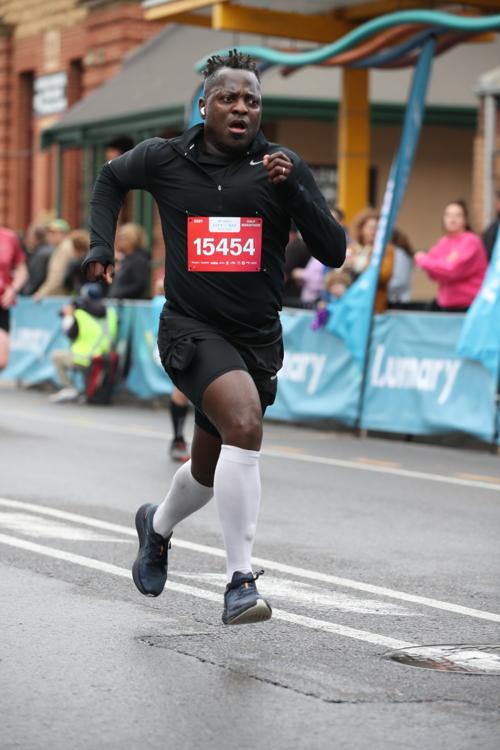
Building My Leadership Toolkit
I have always been a technically oriented professional until a few years ago when I decided to develop my leadership skills.
An initial step in achieving this goal was to augment the ongoing technical actuarial CPD activities with more formal qualifications in leadership. This led to my enrolment in the Public Sector Management Program with The Queensland University of Technology, and the Guardian Actuarial Leadership Program. Through these programs, I built a robust toolkit of strategies that I applied in establishing a parkrun event in Port Pirie – a local event. While technical skills are important, I realised that their prominence progressively diminishes the transitions into leadership roles as these require a more holistic, big-picture and strategic approach to solving problems.
Being an avid runner and parkrun enthusiast, when I relocated to the beautiful regional town of Port Pirie, I looked for a local parkrun event. To my disappointment, there was no local parkrun event. The closest event was at least 45 minutes away, which was less than convenient.
Parkruns are a free, weekly timed 5 km community events where everyone is welcome to come along and walk, jog, run, volunteer, or spectate. The absence of a local event presented an opportunity for me to develop and apply my leadership toolkit in facilitating the establishment and ongoing maintenance of the Memorial Park parkrun.
 Identifying and solving problems in my community
Identifying and solving problems in my community
The recognition of the absence of a local event as a problem; the creation of a hypothetical “big picture” roadmap to find a solution and embarking on a journey to solve the problem, was my first and most crucial step in practically applying the tools in my toolkit.
The most important leadership attribute is to constantly scan the environment by identifying and quantifying gaps, thinking of solutions and mustering the courage to initiate transformative action.
While the identification of key stakeholders was necessary in establishing a local event, it was essential that I had:
- A good understanding of each stakeholder’s interests and needs
- Power and influence dynamics;
- And appetite as they related to the establishment of a local event was pivotal.
With a diverse pool of stakeholders, comprising the Port Pirie Regional Council (“Council”), individual Councillors, Community members, Insurer, parkrun Australia, and parkrun Global (collectively referred to as parkrun), an assessment of the interaction of the above attributes were of significant importance to ensure optimal solution while minimisng any areas of risk, discomfort or concern.
Balancing risks and needs of stakeholders
A good example of balancing various stakeholders’ interests related to the establishment of a suitable course (which meets the parkrun’s specifications – including safety) is to review Council land and other council requirements.
Consideration of all these requirements culminated in the designing of a three-lap kettlebell-shaped course within Memorial Park along a combination of grass-sealed and unsealed paths. This course addressed parkrun’s need for compliance, the Insurer’s need for reasonable residual risks, the parkrun community’s safety needs, and the Council’s need to allow equal access to all community members over the duration of the event.
An analysis of stakeholders’ level of interest and influence is important. This is because an understanding of each stakeholder’s interest and influence dynamics guides the nature of engagement and communication with stakeholders in influencing the desired outcomes.
Council had a high level of interest and a high level of influence, leading to a more concerted interaction. This interaction is characterised by collaborating on aspects of the key decisions and co-designing all solutions including the outline of the 5 km course.
On the other hand, members from the general community with no knowledge of parkrun were an example of low-interest and low-influence stakeholders. My interaction with these stakeholders was more informative as I provided this cohort with balanced yet objective information with limited ongoing monitoring and management.
Applying skills from my leadership toolkit
Application of systematic thinking in managing others and myself contributed immensely to the success of the establishment of this local event. This approach entailed undertaking a self-awareness exercise and understanding, managing, and developing others.
The self-awareness exercise involved understanding my strengths and weaknesses resulting in effective engagement with all key stakeholders including Council, parkrun, and prospective volunteers and participants. As part of this exercise, I learnt more about the other stakeholders’ work and engagement styles. This helped me to understand their priorities and how these priorities aligned with or differed from mine
The combination of a good understanding of all stakeholders and self-awareness allowed me:
- To determine the best level and method of engagement, consideration of timing issues and resource requirements
- Identify individuals who were responsible for engagement,
- How to create key messages to communicate and manage associated risks.
This assisted me in establishing high-quality engagements and effective relationships with the various stakeholders. The key results were that the parkrun authorised the establishment of a local event, Council provided landowner rights and fully funded the initial set-up costs, and the local parkrun community responded by submitting expressions of interest both as participants and volunteers.
The power of coaching
Coaching is a powerful methodology that I continuously apply to create a positive volunteering environment and support the volunteers to perform and thrive. This approach fosters a mindset that is guided by inquiry, curiosity, and positive support while focusing on strategic and operational objectives of the parkrun organisation.
The benefits of this approach included:
- An enhanced perspective of meaning and purpose,
- More engaged volunteers
- Greater creativity
- And greater preparedness to explore and experiment have already started to manifest.
Technical actuarial skills + leadership skills = maximum impact
The process I undertook in establishing this local event fits perfectly in the mould of the actuarial control cycle in terms of the problem definition, solution design, and results monitoring iterative process subject to external influences such as public interest, policies and procedures, risk management, and various compliance matters.
A significant distinction to the way I previously applied this process is the placement of a greater emphasis on the holistic strategic view of the project. This was characterised by the application of various leadership methods including project management, stakeholder engagement, communicating to influence, managing self and others, and enabling self and others for productivity and performance.
My experience highlights the versatility of the actuarial skillset coupled with leadership attributes, particularly the effective applicability of this aggregated skillset in solving non-traditional actuarial problems.
Application of the recently acquired leadership skillset, supported by my strong technical actuarial acumen allowed me to successfully introduce this free, community-lead, physical activity which fosters greater community integration and a more healthier and happier community.
CPD: Actuaries Institute Members can claim two CPD points for every hour of reading articles on Actuaries Digital.






